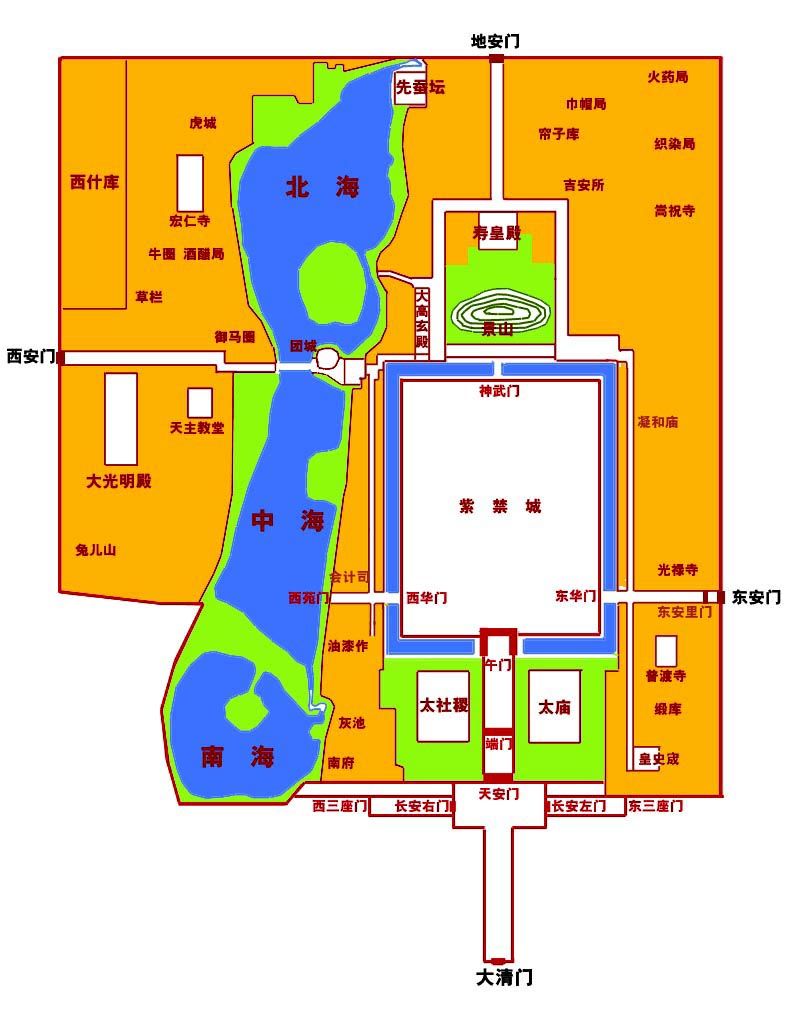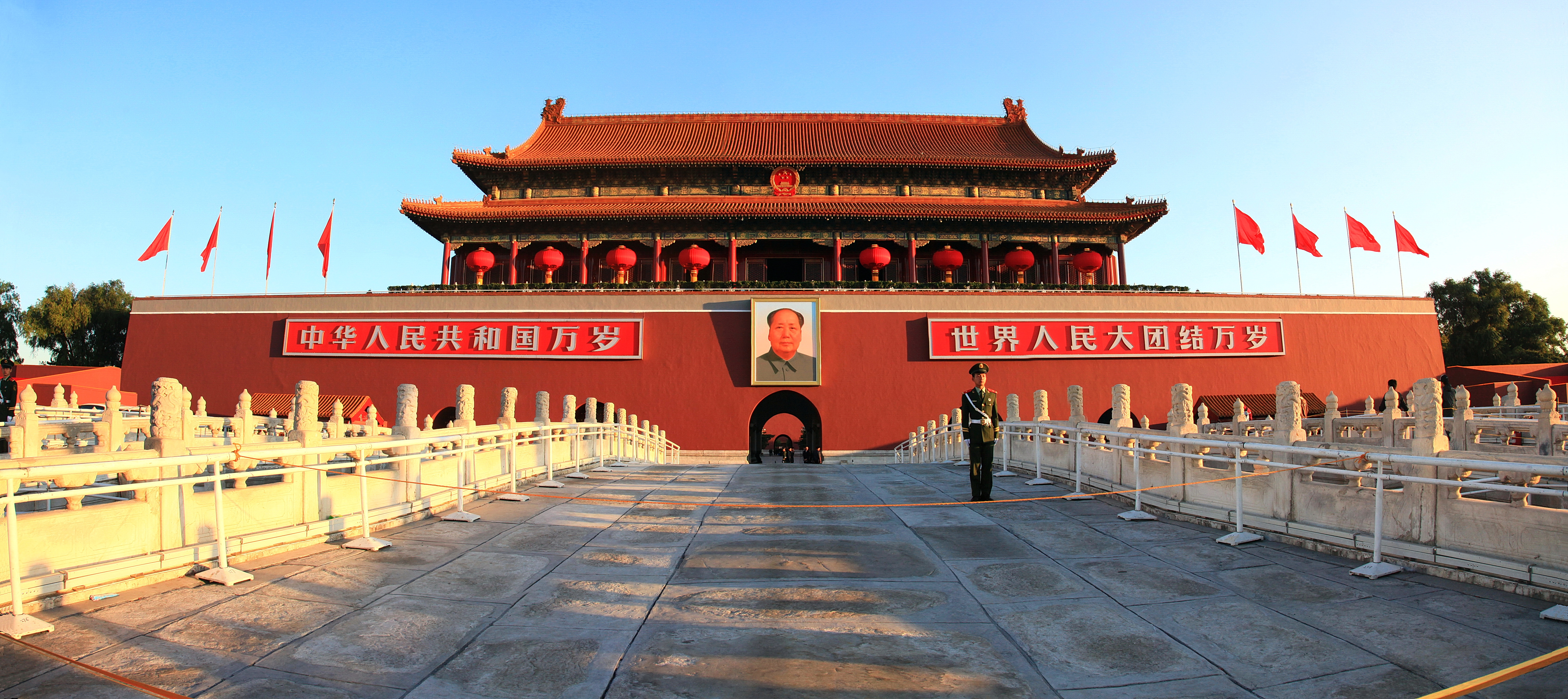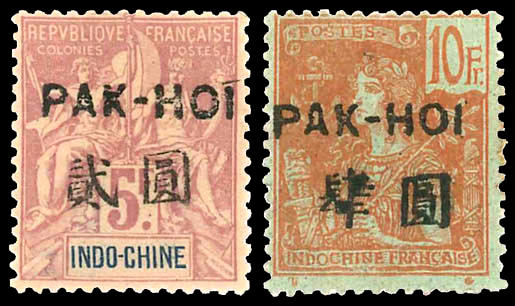|
Imperial City (Beijing)
The Imperial City () is a section of the city of Beijing in the Ming and Qing dynasties, with the Forbidden City at its center. It refers to the collection of gardens, shrines, and other service areas between the Forbidden City and the Inner City of ancient Beijing. The Imperial City was surrounded by a wall and accessed through seven gates and it includes historical places such as the Forbidden City, Tiananmen, Zhongnanhai, Beihai Park, Zhongshan Park, Jingshan, Imperial Ancestral Temple, and Xiancantan. China Through A Lens Construction [...More Info...] [...Related Items...] OR: [Wikipedia] [Google] [Baidu] |
Di'anmen
Di'anmen () or Bei'anmen was an imperial gate in Beijing, China. The gate was first built in the Yongle period of the Ming dynasty, and served as the main northern gate to the Imperial City (the southern gate is the much more famed Tiananmen The Tiananmen (also Tian'anmen (天安门), Tienanmen, T’ien-an Men; ), or the Gate of Heaven-Sent Pacification, is a monumental gate in the city center of Beijing, China, the front gate of the Imperial City of Beijing, located near the ci ...). The gate is located north of Jingshan Park and south of the Drum Tower. The gate was demolished in 1954. Efforts to restore it have been under way since 2013. Chinese architectural history Gates of Beijing Neighbourhoods of Beijing Demolished buildings and structures in China Buildings and structures demolished in 1954 {{Beijing-geo-stub ... [...More Info...] [...Related Items...] OR: [Wikipedia] [Google] [Baidu] |
Gate Of China, Beijing
The Gate of China () was a historical ceremonial gateway in Beijing, China, located near the center of latter-day Tiananmen Square. It was demolished in 1954. This gate formed the southern gate of the Imperial City during the Ming and Qing dynasties. It was situated on the central axis of Beijing, to the north of Zhengyang Gate, and south of Tiananmen. Unlike these two defensive gates, the Gate of China was a purely ceremonial gateway, with no ramparts, but was a brick-stone structure with three gateways. History The gate was first built in the Yongle period of the Ming dynasty. As it was the southern gate of the Imperial City, and in ancient China "south" was regarded as the most eminent direction, this gate enjoyed a status as "Gate of the Nation". Its name has changed as dynasties rose and fell. In the Ming dynasty it was known as the "Great Ming Gate", and bore a set of engraved couplets "The Sun and Moon illuminate the virtues of Heaven; The Mountains and Rivers make m ... [...More Info...] [...Related Items...] OR: [Wikipedia] [Google] [Baidu] |
Yamen
A ''yamen'' (''ya-men''; ; Manchu: ''yamun'') was the administrative office or residence of a local bureaucrat or mandarin in imperial China. A ''yamen'' can also be any governmental office or body headed by a mandarin, at any level of government: the offices of one of the Six Ministries is a ''yamen'', but so is a prefectural magistracy. The term has been widely used in China for centuries, but appeared in English during the Qing dynasty. Overview Within a local ''yamen'', the bureaucrat administered the government business of the town or region. Typical responsibilities of the bureaucrat includes local finance, capital works, judging of civil and criminal cases, and issuing decrees and policies. Typically, the bureaucrat and his immediate family would live in a residence attached to the ''yamen''. This was especially so during the Qing dynasty, when imperial law forbade a person from taking government office in his native province. ''Yamen''s varied greatly in size de ... [...More Info...] [...Related Items...] OR: [Wikipedia] [Google] [Baidu] |
Tian'anmen
The Tiananmen (also Tian'anmen (天安门), Tienanmen, T’ien-an Men; ), or the Gate of Heaven-Sent Pacification, is a monumental gate in the city center of Beijing, China, the front gate of the Imperial City of Beijing, located near the city's Central Business District, and widely used as a national symbol. First built during the Ming dynasty in 1420, Tiananmen was the entrance to the Imperial City, within which the Forbidden City was located. Tiananmen is located to the north of Tiananmen Square, and is separated from the plaza by Chang'an Avenue. Name The Chinese name of the gate (/), is made up of the Chinese characters for "heaven", "peace" and "gate" respectively, which is why the name is conventionally translated as "Gate of Heavenly Peace". However, this translation is somewhat misleading, since the Chinese name is derived from the much longer phrase "receiving the mandate from heaven, and pacifying the dynasty". (). The Manchu translation, ''Abkai elhe obure du ... [...More Info...] [...Related Items...] OR: [Wikipedia] [Google] [Baidu] |
Beijing Shejitan
The Beijing Shejitan (), also known as the Altar of Earth and Harvests or the Altar of Land and Grain, is a Confucian altar located in the Zhongshan Park in Beijing, China. Built in 1421 by the Ming dynasty, it was where national soil and grain ceremonies were conducted during the Ming and Qing dynasties. The Shejitan is also located in the opposite geometric location to the Imperial Ancestral Temple. Along with the Imperial Ancestral Temple, the Temple of Agriculture, and the Temple of Heaven, it is one of Beijing's main imperial temples. See also * Taimiao (Imperial Ancestral Temple) * Imperial City, Beijing * Sajikdan The Sajikdan is a Korean Neo-Confucian altar located in Seoul, South Korea used to perform the national soil and grain ceremonies
|
Beihai
Beihai (; Postal romanization: Pakhoi) is a prefecture-level city in the south of Guangxi, People's Republic of China. Its status as a seaport on the north shore of the Gulf of Tonkin has granted it historical importance as a port of international trade for Guangxi, Hunan, Hubei, Sichuan, Guizhou, and Yunnan. Between the years 2006 and 2020, Beihai is predicted to be the world's fastest growing city. Beihai has a large shipyard, but most of the money generated in the city is derived from trade. In addition, it governs the small islands of Weizhou and Xieyang, and is directly west of Leizhou Peninsula. Subdivisions Beihai contains three districts and one county, which are subdivided into five urban sub-districts, 23 towns, 3 townships, 87 neighborhood committees, 343 village committees. (see also Administrative divisions of the People's Republic of China#Levels) * Haicheng District () * Yinhai District () * Tieshangang District () * Hepu County () History After ... [...More Info...] [...Related Items...] OR: [Wikipedia] [Google] [Baidu] |
Yongle Emperor
The Yongle Emperor (; pronounced ; 2 May 1360 – 12 August 1424), personal name Zhu Di (), was the third Emperor of the Ming dynasty, reigning from 1402 to 1424. Zhu Di was the fourth son of the Hongwu Emperor, the founder of the Ming dynasty. He was originally enfeoffed as the Prince of Yan () in May 1370,Chan Hok-lam.Legitimating Usurpation: Historical Revisions under the Ming Yongle Emperor (r. 14021424). ''The Legitimation of New Orders: Case Studies in World History''. Chinese University Press, 2007. . Accessed 12 October 2012. with the capital of his princedom at Beiping (modern Beijing). Zhu Di was a capable commander against the Mongols. He initially accepted his father's appointment of his eldest brother Zhu Biao and then Zhu Biao's son Zhu Yunwen as crown prince, but when Zhu Yunwen ascended the throne as the Jianwen Emperor and began executing and demoting his powerful uncles, Zhu Di found pretext for rising in rebellion against his nephew. Assisted in large part ... [...More Info...] [...Related Items...] OR: [Wikipedia] [Google] [Baidu] |
Zhu Di
The Yongle Emperor (; pronounced ; 2 May 1360 – 12 August 1424), personal name Zhu Di (), was the third Emperor of the Ming dynasty, reigning from 1402 to 1424. Zhu Di was the fourth son of the Hongwu Emperor, the founder of the Ming dynasty. He was originally enfeoffed as the Prince of Yan () in May 1370,Chan Hok-lam.Legitimating Usurpation: Historical Revisions under the Ming Yongle Emperor (r. 14021424). ''The Legitimation of New Orders: Case Studies in World History''. Chinese University Press, 2007. . Accessed 12 October 2012. with the capital of his princedom at Beiping (modern Beijing). Zhu Di was a capable commander against the Mongols. He initially accepted his father's appointment of his eldest brother Zhu Biao and then Zhu Biao's son Zhu Yunwen as crown prince, but when Zhu Yunwen ascended the throne as the Jianwen Emperor and began executing and demoting his powerful uncles, Zhu Di found pretext for rising in rebellion against his nephew. Assisted in large pa ... [...More Info...] [...Related Items...] OR: [Wikipedia] [Google] [Baidu] |
Hongwu Emperor
The Hongwu Emperor (21 October 1328 – 24 June 1398), personal name Zhu Yuanzhang (), courtesy name Guorui (), was the founding emperor of the Ming dynasty of China, reigning from 1368 to 1398. As famine, plagues and peasant revolts increased across China proper in the 14th century, Zhu Yuanzhang rose to command the Red Turban forces that conquered China proper, ending the Mongol-led Yuan dynasty and forcing the remnant Yuan court (known as Northern Yuan in historiography) to retreat to the Mongolian Plateau. Zhu claimed the Mandate of Heaven and established the Ming dynasty at the beginning of 1368 and occupied the Yuan capital, Khanbaliq (present-day Beijing), with his army that same year. Trusting only his family, he made his many sons feudal princes along the northern marches and the Yangtze valley.Chan Hok-lam.Legitimating Usurpation: Historical Revisions under the Ming Yongle Emperor (r. 14021424)". ''The Legitimation of New Orders: Case Studies in World His ... [...More Info...] [...Related Items...] OR: [Wikipedia] [Google] [Baidu] |
Nanjing
Nanjing (; , Mandarin pronunciation: ), alternately romanized as Nanking, is the capital of Jiangsu province of the People's Republic of China. It is a sub-provincial city, a megacity, and the second largest city in the East China region. The city has 11 districts, an administrative area of , and a total recorded population of 9,314,685 . Situated in the Yangtze River Delta region, Nanjing has a prominent place in Chinese history and culture, having served as the capital of various Chinese dynasties, kingdoms and republican governments dating from the 3rd century to 1949, and has thus long been a major center of culture, education, research, politics, economy, transport networks and tourism, being the home to one of the world's largest inland ports. The city is also one of the fifteen sub-provincial cities in the People's Republic of China's administrative structure, enjoying jurisdictional and economic autonomy only slightly less than that of a province. Nanjing has been ... [...More Info...] [...Related Items...] OR: [Wikipedia] [Google] [Baidu] |






.jpg)
